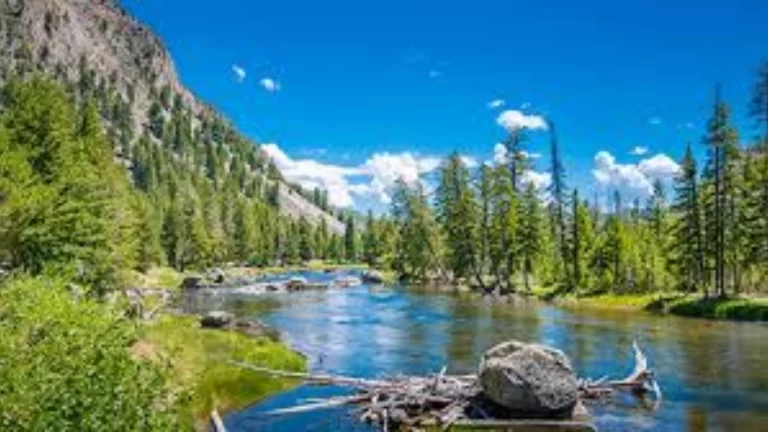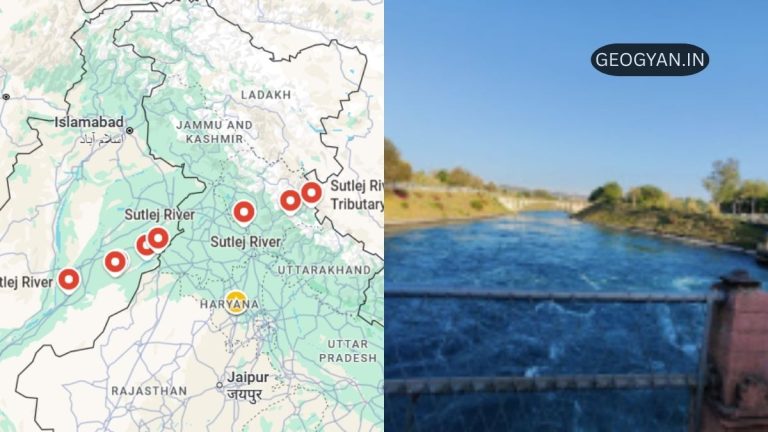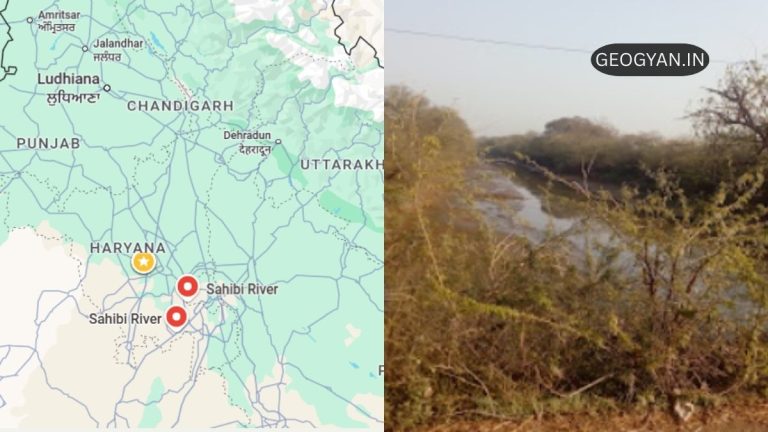Access the latest NCERT Solutions for Class 8 Geography Chapter-3: Agriculture, updated for 2024-2025. Solution is designed to help students tackle difficult questions with ease. The content is written in simple, easy-to-understand language.
Exercise
Answer the following questions:
(i) What is agriculture?
Agriculture is the primary activity that involves the cultivation of crops, fruits, vegetables, flowers, and the rearing of livestock. It is essential for providing food and raw materials for various industries.
(ii) Name the factors influencing agriculture.
The factors influencing agriculture include:
1. Climate (temperature, rainfall)
2. Soil quality
3. Topography (land features)
4. Availability of water
5. Human inputs (labor, machinery, technology).
(iii) What is shifting cultivation? What are its disadvantages?
Shifting cultivation is a type of primitive subsistence farming practiced in forested areas, where farmers clear a plot of land by cutting down and burning trees. Crops like maize and yam are grown on the plot until the soil loses fertility. The farmer then shifts to a new plot.
Disadvantages:
- Causes deforestation.
- Leads to soil degradation and erosion.
- Unsustainable for long-term agricultural productivity.
(iv) What is plantation agriculture?
Plantation agriculture is a type of commercial farming where a single crop, such as tea, coffee, sugarcane, or cotton, is grown on large estates for sale. It requires large amounts of labor and capital, and the produce may be processed on the farm or nearby factories.
(v) Name the fiber crops and name the climatic conditions required for their growth.
Fiber crops include cotton and jute:
- Cotton requires high temperature, light rainfall, and 210 frost-free days with bright sunshine. It grows best in black and alluvial soils.
- Jute requires high temperature, heavy rainfall, and a humid climate. It grows in tropical regions, particularly in India and Bangladesh.
Tick the correct answer:
(i) Horticulture means
(a) growing of fruits and vegetables ✅
(b) primitive farming
(c) growing of wheat
(ii) Golden fibre refers to
(a) tea
(b) cotton
(c) jute ✅
(iii) Leading producers of coffee
(a) Brazil ✅
(b) India
(c) Russia
Give reasons:
(i) In India, agriculture is a primary activity.
Agriculture is a primary activity because it involves the extraction of natural resources (like crops) and supports a large portion of India’s population. Over two-thirds of the population depend on agriculture for their livelihood.
(ii) Different crops are grown in different regions.
Different crops are grown in different regions due to variations in climate, soil quality, water availability, and topography. For example, rice is grown in areas with high rainfall, while wheat grows in regions with moderate rainfall and well-drained soils.
Distinguish between the following:
(i) Primary activities and tertiary activities
- Primary activities involve the extraction of natural resources (e.g., agriculture, fishing, mining).
- Tertiary activities involve providing services such as transport, trade, banking, and insurance.
(ii) Subsistence farming and intensive farming
- Subsistence farming: Farmers grow crops to meet the needs of their families, using low technology and small plots of land.
- Intensive farming: Farmers use more labor and inputs to grow multiple crops in the same year on the same plot of land. It is commonly practiced in densely populated regions.
Other Important Short Answer Questions
Based on Chapter 3 from the NCERT Class 8 book “Agriculture,” here are important short answer-type questions, aligned with previous NCERT 8th-grade examinations and UPSC standards.
1. What is the importance of agriculture in India?
Agriculture is the primary activity for a large portion of India’s population, providing livelihood to about two-thirds of the population. It supplies raw materials for industries and contributes significantly to the country’s economy. The country’s varied climate and topography support a wide range of crops like rice, wheat, and cotton.
2. Explain shifting cultivation and its disadvantages.
Shifting cultivation, also known as “slash and burn” agriculture, is practiced in heavily forested areas. Farmers clear the forest, burn the vegetation, and cultivate crops. Once the soil loses fertility, the plot is abandoned. Disadvantages include deforestation, loss of biodiversity, soil erosion, and low productivity over time.
3. What is commercial farming, and where is it practiced?
Commercial farming involves the large-scale production of crops and livestock for sale in the market. It uses modern techniques like machinery and chemical fertilizers. It is practiced in countries with advanced agricultural technology, such as the USA, Canada, and Australia. Crops like wheat, maize, and cotton are commonly grown in these regions.
4. Discuss the concept of mixed farming.
Mixed farming involves cultivating food and fodder crops while rearing livestock on the same land. It ensures the efficient use of land and resources, helping in diversifying income sources. It is practiced in Europe, parts of the USA, and Australia, where farmers grow crops like wheat alongside rearing cattle and sheep.
5. What is intensive subsistence farming, and where is it common?
Intensive subsistence farming is practiced in densely populated regions, primarily in Southeast Asia. Farmers cultivate small plots of land using simple tools and abundant labor. Crops like rice, wheat, and maize are grown to meet the needs of the family, and often, multiple crops are grown in a year due to fertile soil and favorable climate.
6. What factors affect agricultural development?
Agricultural development is influenced by several factors, including climate, soil fertility, availability of water, technology, and labor. Economic conditions, government policies, and access to markets also play crucial roles. These factors determine the type of crops grown and the methods used for cultivation.
7. What are plantations, and what crops are grown in them?
Plantations are large-scale farming operations where a single crop is grown for commercial purposes. They require significant labor and capital investment. Common plantation crops include tea, coffee, sugarcane, rubber, and cotton. These are grown in tropical regions like India, Brazil, Malaysia, and Sri Lanka.
8. How does organic farming differ from traditional farming?
Organic farming avoids the use of chemical fertilizers and pesticides. Instead, it relies on natural processes like crop rotation, compost, and biological pest control. The focus is on maintaining soil fertility and environmental sustainability, producing healthier crops, and reducing the negative impact of agriculture on the environment.
9. What are the characteristics of subsistence farming?
Subsistence farming is practiced to meet the basic needs of the farmer’s family. It uses low levels of technology and often small plots of land. Farmers rely on family labor and traditional methods of farming. This type of farming is common in rural areas of developing countries, such as India and parts of Africa.
10. Describe the role of technology in modern agriculture.
Technology has revolutionized modern agriculture by increasing productivity and efficiency. Innovations like tractors, seed drills, and irrigation systems help farmers cultivate large areas with minimal labor. Biotechnology, satellite imagery, and computer systems are used to monitor crop health and optimize inputs like water and fertilizers.
MCQs: Agriculture
Based on Chapter 3 from the NCERT Class 8 book “Agriculture,” here are 20 multiple-choice questions (MCQs), with answers provided at the end. These questions are aligned with past NCERT 8th-grade examinations and UPSC standards.
1. Which of the following is considered a primary activity?
a) Banking
b) Agriculture
c) Manufacturing
d) Transportation
2. What percentage of the world’s population is engaged in agriculture?
a) 25%
b) 50%
c) 75%
d) 90%
3. Which type of farming is practised to meet the needs of the farmer’s family?
a) Commercial farming
b) Intensive farming
c) Subsistence farming
d) Plantation farming
4. Shifting cultivation is also known as:
a) Crop rotation
b) Intensive farming
c) Slash and burn farming
d) Organic farming
5. Which of the following crops requires high temperature, humidity, and alluvial clayey soil?
a) Wheat
b) Rice
c) Maize
d) Jute
6. What is the term used for the rearing of fish in specially constructed tanks or ponds?
a) Sericulture
b) Horticulture
c) Pisciculture
d) Viticulture
7. The cultivation of fruits, vegetables, and flowers for commercial purposes is called:
a) Sericulture
b) Horticulture
c) Viticulture
d) Pisciculture
8. Which of the following countries is the leading producer of wheat?
a) Brazil
b) India
c) China
d) USA
9. Nomadic herding is mainly practised in:
a) Sahara, Central Asia
b) South America
c) Northern Europe
d) South-East Asia
10. What is the primary purpose of plantation farming?
a) Growing crops for family consumption
b) Growing single crops for commercial use
c) Breeding livestock for local markets
d) Growing a variety of crops on small land plots
11. Which crop is known as the ‘Golden Fibre’?
a) Cotton
b) Jute
c) Rice
d) Wheat
12. Which of the following is an example of fibre crops?
a) Wheat and rice
b) Cotton and jute
c) Tea and coffee
d) Maize and millets
13. Which of these is NOT a major factor influencing agriculture?
a) Soil
b) Climate
c) Technology
d) Social media
14. Which country leads in coffee production?
a) India
b) Brazil
c) Colombia
d) Vietnam
15. Which type of soil is ideal for cotton cultivation?
a) Sandy soil
b) Alluvial and black soil
c) Laterite soil
d) Loamy soil
16. What is agricultural development aimed at?
a) Reducing the size of farms
b) Increasing food production to meet population demand
c) Improving urban infrastructure
d) Limiting the use of pesticides and fertilizers
17. In which type of farming are crops grown mainly for sale?
a) Subsistence farming
b) Commercial farming
c) Organic farming
d) Nomadic herding
18. Which crop requires 210 frost-free days for its growth?
a) Rice
b) Cotton
c) Wheat
d) Coffee
19. The science and art of cultivation on the soil, raising crops, and rearing livestock is called:
a) Pisciculture
b) Agriculture
c) Horticulture
d) Sericulture
20. Which of the following is a staple food crop in tropical and subtropical regions?
a) Wheat
b) Rice
c) Barley
d) Millets
Answers:
1. b) Agriculture
2. b) 50%
3. c) Subsistence farming
4. c) Slash and burn farming
5. b) Rice
6. c) Pisciculture
7. b) Horticulture
8. d) USA
9. a) Sahara, Central Asia
10. b) Growing single crops for commercial use
11. b) Jute
12. b) Cotton and jute
13. d) Social media
14. b) Brazil
15. b) Alluvial and black soil
16. b) Increasing food production to meet population demand
17. b) Commercial farming
18. b) Cotton
19. b) Agriculture
20. b) Rice
Other Chapter
| Chapter 1:- Resource | Chapter 2:- Land, Soil, Water, Natural Vegetation and Wildlife Resources |
| Chapter 4:- Industries | Chapter 5:- Human Resources |




























